According to Steelcase research, there are six dimensions of workplace wellbeing that can be realised using a palette of 'posture, presence and place'.
What is wellbeing at work?
Promoting wellbeing at work is a more holistic ambition than achieving the narrowly defined objective of ‘wellness’. Whereas wellness is largely related to bodily health, wellbeing encompasses a range of goals around physical and emotional health, comfort and happiness at work, as well as levels of motivation and employee engagement.
The six dimensions of workplace wellbeing are defined as: mindfulness, vitality, authenticity, a sense of belonging, optimism and purpose.
The Steelcase research demonstrates how all these can be promoted by a focus on posture, place and presence in our working environments and the furniture solutions we choose for them.
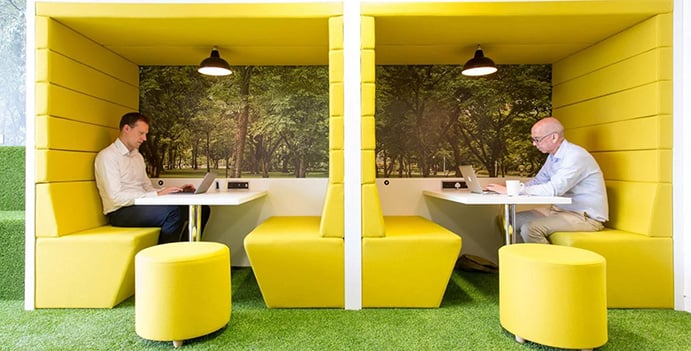
Posture
A palette of different working postures can help you support the various kinds of cognitive and creative tasks required of the modern job role.
Highly flexible and ergonomic furniture design contributes to our ability to engage, be energised and mindful in the jobs we need to perform. The right task chair can prevent back strain, fatigue and discomfort, improving our ability to concentrate, and the quality of our focus and working experience. They can help us work in the way that is most comfortable to us, for longer and more sustained periods.
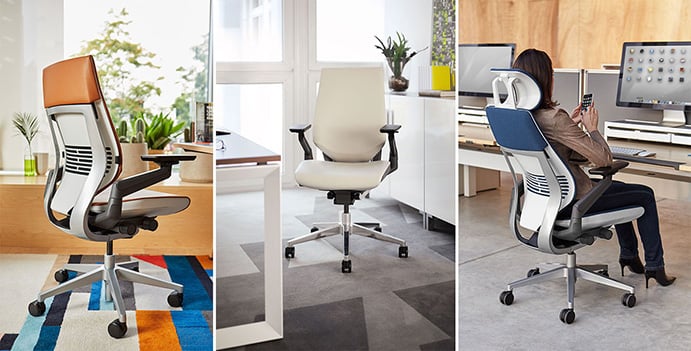
Similarly, height adjustable desks can support sit/stand requirements, varying postures to relieve pressure and strain, literally giving us fresh perspectives on a problem or a piece of work we have been focusing on.
For those hot desking or home workers visiting offices, app operated smart desks can remember our preferred work settings, bringing extra efficiencies and comfort to our working day without the stress of making manual adjustments or finding a particular desk that suits us.
Meanwhile, modern office furniture solutions that let us switch quickly from group to individual tasks and back again, support the creative, agile working practices that are making workers more engaged, happier and therefore more productive.
These agile design features include benches, desks and chairs that can be rolled apart and pushed together at will; office interiors that can be re-configured according to the changing needs of a team throughout the day.
Presence and place
Providing a palette of place and presence is about giving every member of your team the freedom to work where and how they want. it acknowledges a workers' need for self-direction and self-care in their working lives.
Design that mediates workers' public and private presence within an office setting is proven to be key to worker wellbeing.
In their research, Steelcase identifies the need for ‘I’ and ‘We’ spaces - locations where solo or group work can more easily happen. These spaces can be ‘owned’ or ‘shared’ by groups or individuals.
For example, some spaces need to be set up for isolated, silent, individual work, while others should support individual working in a group setting. At the same time, in any office, there is always the need for more formal, private meeting rooms, as well as buzzy, creative collaborative environments.
The challenge of open plan
The challenge for modern businesses, then, is shaping what are essentially open plan spaces into an ecosystem of different environments furnished for these functions and the wellbeing of the people who use it.
These might include: open sided and fully enclosed office pods, booths of various sizes fully integrated with required technology; individual work stations that can visually and acoustically shield individuals from distraction when necessary. All these solutions can provide highly flexible options for various kinds of ‘I’ and ‘We’ work.
Creating ‘private’ spaces within open plan settings offers opportunities for mindfulness, self-care and concentration - often not possible in open plan settings.
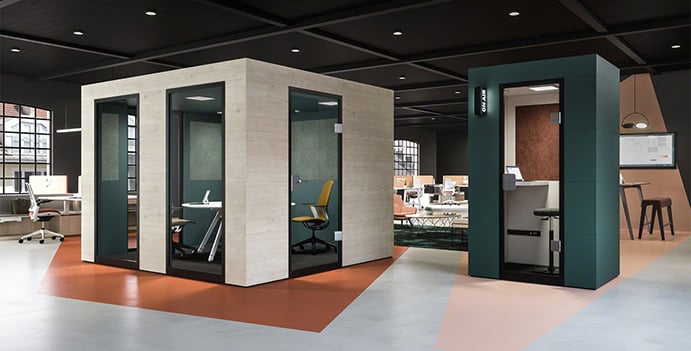
Choose user centred design and selection strategies
A modern business acknowledges the nature and demands of the tasks they need their people to perform as part of their commitment to worker wellbeing.
These businesses acknowledge the need for labour and rejuvenation within the working day.
Furniture that supports lounging and reclining can help us recharge while aiding creative thinking.
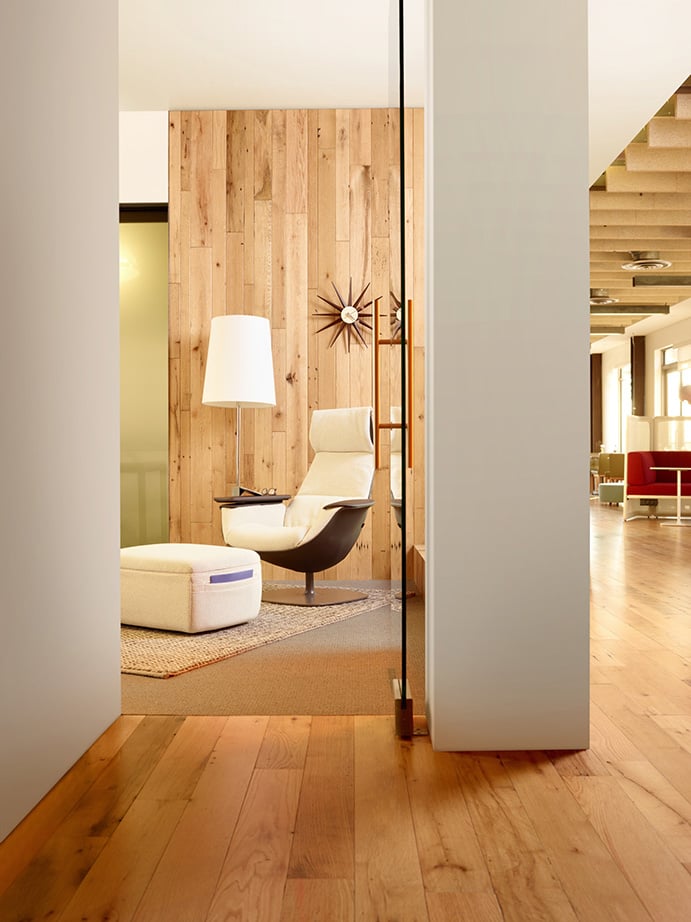
Meanwhile, office furniture that supports sustained concentration is key to physical health.
Vitality can be promoted in spaces where dynamic behaviour, attitudes and postures are required by choosing furniture that encourages perching, moving, presenting and gesturing.
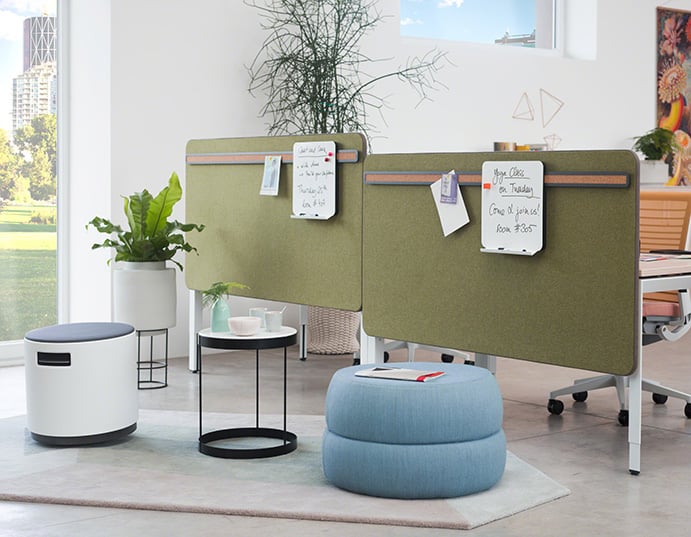
For example, spaces created with acoustic boundaries and marker boards can make ideal locations for ideas to flow freely during a creative brainstorm, with opportunities to pin up and display visual prompts and other stimuli. Standing-height slim tables can keep all participants actively engaged in a conversation and debate.
Solutions that work
All too often, office refits are focused on paying lip service to trends - furniture that looks good but is not ergonomically designed - settings that are striking or 'modern' in feel, but not supportive of the need for comfort, privacy, or the collaborative tasks they will be required to host.
In this way design and furniture choices can often detract from your worker wellbeing goals.
Instead, the palette of postures, place and presence you use to create your working landscapes should be driven by your commitment to the wellbeing of the people who will work within them. The sensitive and user-centric selection of furnishing options is a fundamental part of this.








